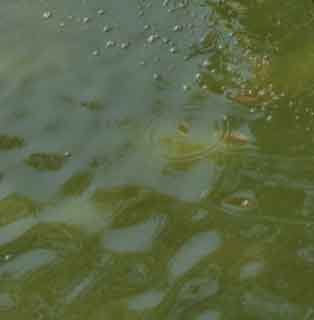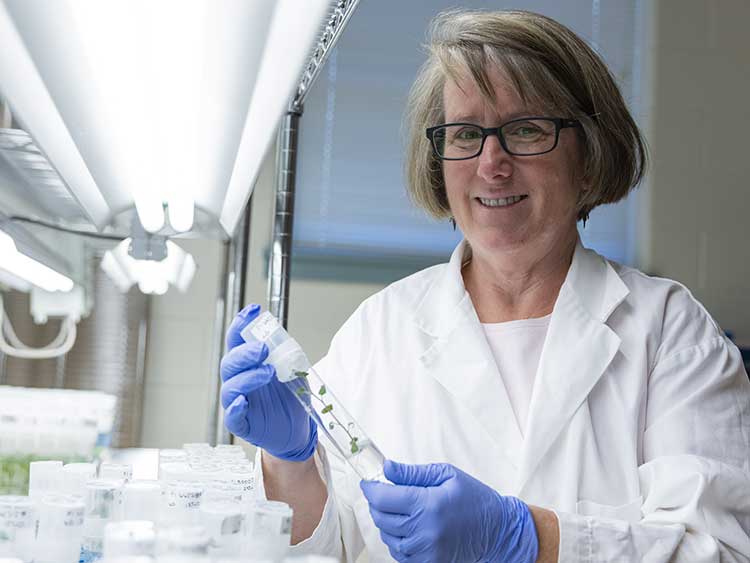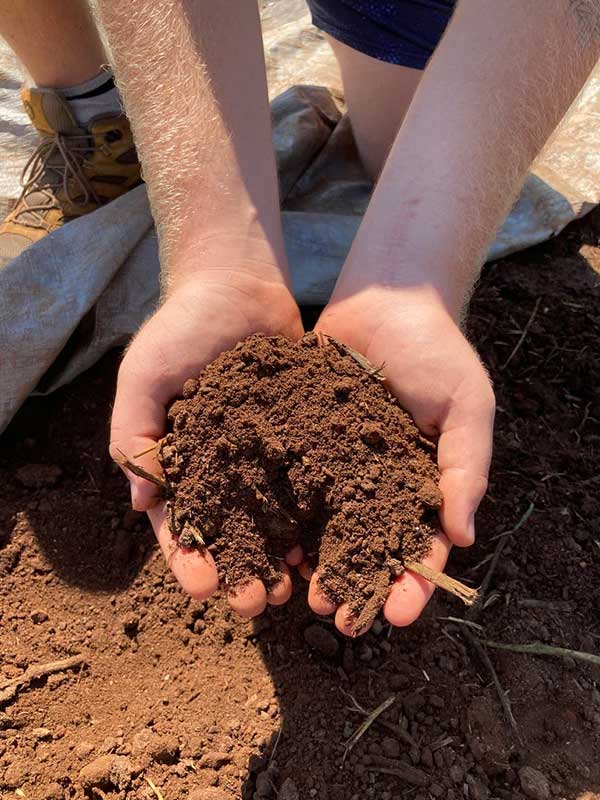With the summer heat and sporadic rainfall, conditions are right for farm ponds to become inundated with harmful algal blooms.
Each summer, University of Georgia Cooperative Extension receives reports of dogs, cattle, people and other livestock being sickened by contact with pond and lake water contaminated with cyanobacteria, an algaelike bacteria. This summer, given the drought conditions affecting much of north Georgia, Extension agents and researchers are expecting to see an uptick in harmful algal blooms. They’re asking farmers to be on the lookout.
“The conditions are right to see a number of ponds with blue-green algae blooms in them,” said Dennis Hancock, a UGA Extension forage specialist. “When you have a winter with lots of rain, then no rain and then lots of sunshine, this is to be expected. … There’s not much that can be done. Farmers are going to have to let nature take its course and get their animals out of there.”
In 2012, the last time Georgia experienced serious drought conditions, the death of some Gwinnett County cattle was tied to cyanobacteria bloom. Lawton Stewart, a UGA Extension animal scientist, said animals affected with the liver toxins often appear weak, exhibit muscle tremors and convulsions and have bloody diarrhea.
Harmful algal blooms need sunlight, stagnant, warm water and nutrients to develop. This winter, when rain was plentiful, there were lots of nutrients — everything from lawn fertilizer to cow manure — flowing into small bodies of water. Without rain, these nutrients have only become more concentrated, making the ponds the perfect home for algae and cyanobacteria.
While cyanobacteria produce toxins that are dangerous to animals and people, all algal blooms have environmental impacts, said Liz Kramer, an ecologist and water quality expert with UGA Extension. They deplete the oxygen in standing bodies of water, causing foul odors and fish kills.
Cyanobacteria blooms ruin farm ponds and are hard to control. Using chemicals to kill the algal bloom will actually lead to the release of more toxins into the pond, rendering it useless as a water source for weeks or months. Likewise, high daytime temperatures can cause inversions in ponds, forcing the cyanobacteria blooms to the bottom of the pond and releasing toxins.
Blooms of algae and cyanobacteria often look like green, blue-green or reddish-brown paint floating on the surface of small bodies of water, usually near the shoreline. Any color change in a pond should be regarded as suspicious.
If farmers notice this type of bloom in their ponds, they should remove their livestock from the area immediately to avoid harm to the animals, Hancock said.
UGA Extension recommends that farmers use clean water provided in a trough or waterer. This could be well or municipal water or water piped out of a pond that is inaccessible to the livestock. This reduces the risk to water quality, but it makes economic sense, too. Animal performance and the health of the animals are improved when water is provided in a trough, but not all farmers have adopted that practice.
All members of the public are invited to report any algal bloom sightings in farm ponds, neighborhood retention ponds or lakes to UGA water quality researchers through the CyanoTRACKER app, which was developed by a team led by UGA geographer Deepak Mishra.
The app, available for iPhone and Android phones, allows everyday Georgians to help track cyanobacteria blooms. Researchers can then map the topography, land use conditions and weather conditions that lead to the development of harmful algal blooms.
Georgians can also submit photos and location information via Facebook and Instagram by visiting CyanoTracker.uga.edu. Researchers will then use satellite imaging data, water level data and, sometimes, site visits to investigate the bloom further.
Kramer, who works with Mishra, is hoping to partner with UGA Sustainable Food Systems Initiative interdisciplinary graduate student Sam Webber, funded by the U.S. Department of Agriculture National Needs Fellowship Grant Program, to track the blooms and plot the land use and climatic conditions around each bloom site to develop a set of best practices and, ultimately, a predictive model to help farmers and water source managers avoid the blooms in the future. Being able to quantify the risk could make it easier for farmers to take on expenditures that protect their ponds, like leaving vegetative buffers around the ponds or fencing them off from livestock.
“We can help people understand the risk of their land management choices to their ponds and to water quality in general,” Kramer said. “We want to say, ‘If these conditions will be present, you will more than likely see an algal bloom,’ or ‘If these conditions are present, this might not be the best time to spread chicken litter on your field.’”
For more information on strategies for coping with drought on the farm or in your yard, visit extension.uga.edu.







